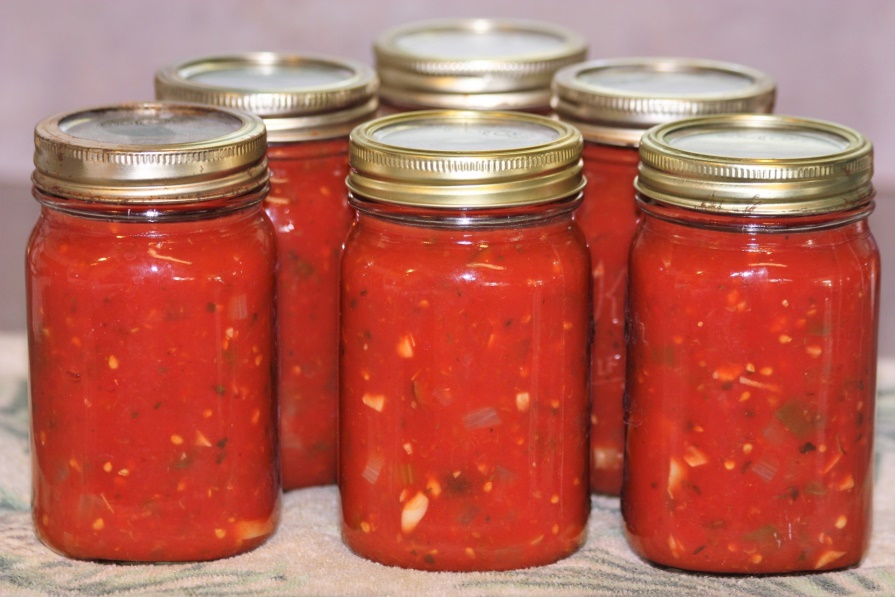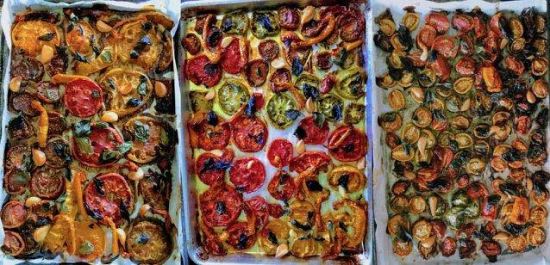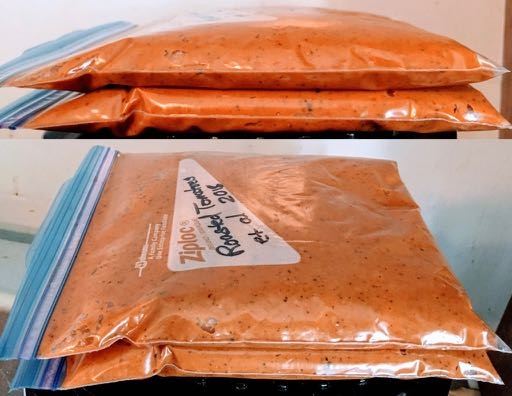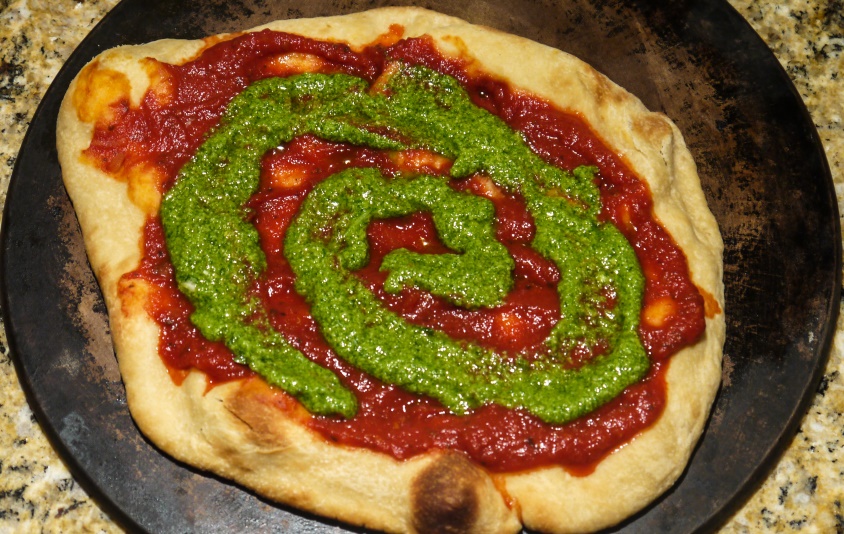How About ROASTED Tomato Sauce?

A few weeks ago, Blythe Pelham, reader contributor to Mother Earth News, wrote about roasting tomatoes as part of making home canned tomato sauces. I’d never thought of doing this, so the idea caught my attention.
I do understand that roasting any vegetable increases its depth of flavor, so roasting tomatoes before home canning or freezing them makes good sense.
In her article, Blythe explained: “It’s important to either place like-sized tomatoes or to chop them into similar sizes when grouping them on a cookie sheet. Different sizes will roast for variable amounts of time. After washing and stemming, small cherry or pear tomatoes can be simply sliced in half and cook much more quickly than their larger cousins due to having less moisture-retaining flesh. Larger tomatoes need to be sliced thickly (my preference) or quartered and cored.”

Blythe further explains that she lines her sheet pans with parchment paper and lightly coats them with olive oil prior to loading with her tomatoes, garlic cloves, fresh basil leaves, and bell pepper slices. She also advises: “…you definitely don’t want your tomatoes piled on each other. They can touch but try to keep the overlapping to a minimum.
“Use a cookie sheet or pan with an edge on it because you’re going to liberally drizzle olive oil over the top of the veggies. The tomatoes will also bleed some of their moisture onto the surface as they cook down. Without a high enough edge, that liquid will end up all over the bottom of your oven.

“I cook mine in the oven for 3-4 hours at 275 degrees then take out the smaller ones that have already caramelized and turn up the temperature to 325 degrees for the larger tomatoes. Once I deem them finished, I take the trays out of the oven and let them cool. Then they slip off the parchment and into my blender or food processor to become the lovely saucy paste you see in this photo.”
The smell as they are roasting is heavenly. You have to love that the oven is doing the bulk of the work rather than you slaving over a hot stove while creating your end product. Blythe says the biggest drawback is the loss in quantity. The three trays of lush tomatoes (about 15 pounds) pictured above, yielded just two partially filled quart bags for freezing. Still… I think this method is worth keeping in my repertoire for something different.
The rich roasted taste is definitely a crowd pleaser and works well in any dish that calls for tomato sauce or paste. And I’ll close by sharing a crowd-pleasing application of this roasted tomato sauce. We heat ours through then swirl pesto sauce into it before pouring it over pasta. The proportions are 3 cups sauce to ¾ to 1 cup pesto sauce (it depends on how much you like pesto).

And by the way, this roasted tomato sauce (with or without the added pesto) is simply divine over lightly streamed spiralized veggies (zucchini or sweet potatoes, especially). Add a sprinkling of roughly chopped walnuts or pine nuts and you have a winner every time. Or layer pesto atop your roasted tomato sauce when making homemade pizza before adding other roasted veggies and you’ll have yet another winner!
- www.publicdomainpictures.net
- www.motherearthnews.com
- www.recetterie.wordpress.com
 Alice Osborne
Alice Osborne
Weekly Newsletter Contributor since 2006
Email the author! alice@dvo.com
